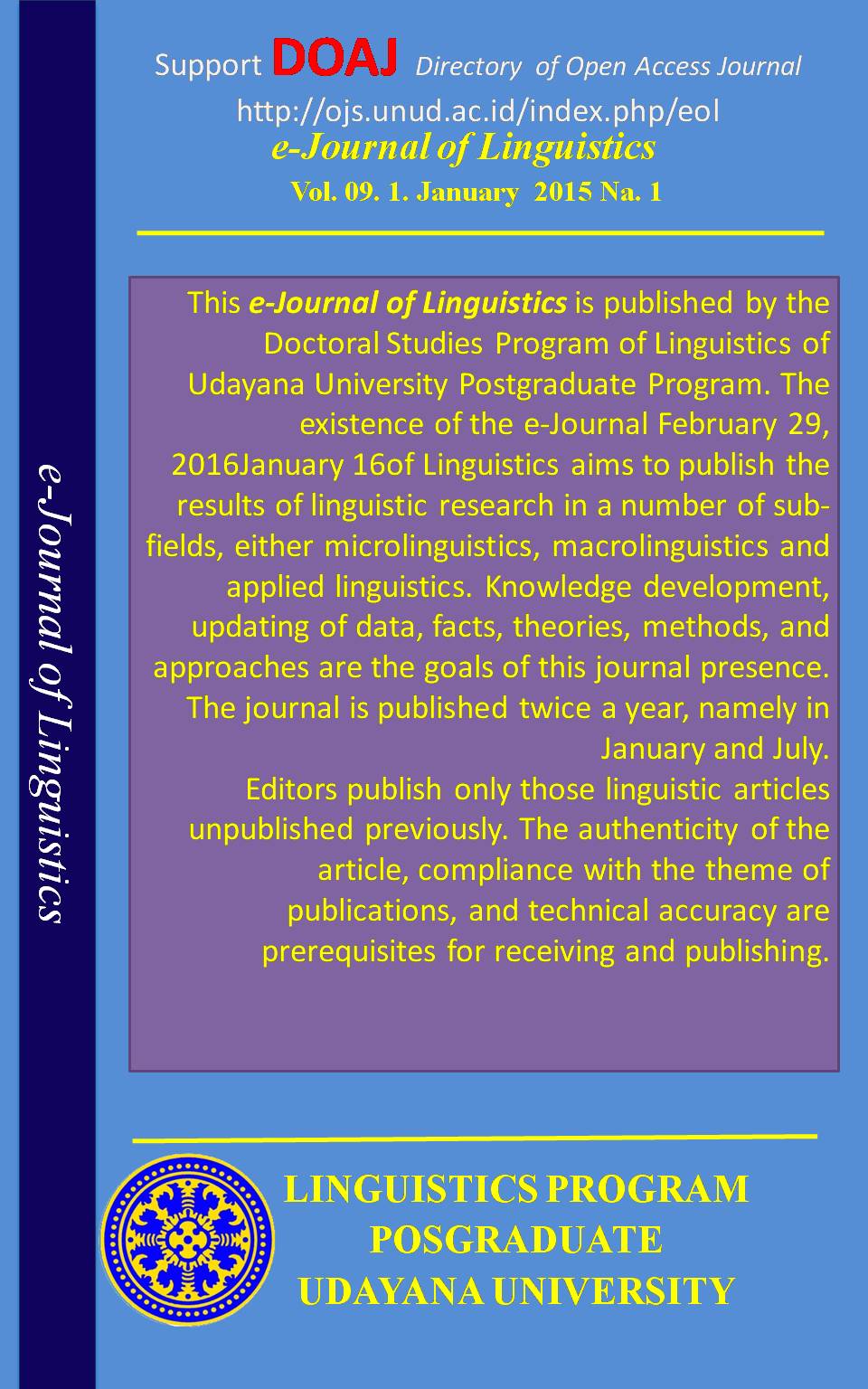THE STRUCTURE OF TULEMBANG AND TUPAKBIRING MANTRAS IN THE LIFE OF MAKASSAR ETHNIC
Abstract
Mantra is the oldest form of literature in Indonesia which still survives until now and is still used by traditional communities. Makassar Traditional Societies use mantra according to their needs. Mantra for planting rice or mantra for cultivation is called Tulembang mantra, while mantra for fishing is called Tupakbiring mantra. The mantra is in the form of expressions or words can bring magic power. The power aims to provide strength for human in performing various activities. The forms can be praises to something to be considered as sacred such as gods, spirits, animals, or God usually uttered by sanro (shaman) and pinati (one who has magic power to perform something).
The mantra tends to be free in terms of syllables, lines, and rhymes. The unity of the mantra text is more dominated by irregular rhyme and alteration. The functions are theological, religious, social, and cultural as a means of communication with the creator and as a respect to human beings. The meaning contains acknowledgement, hope, sanctity of self and heart, serenity, and inner satisfaction.
Downloads
Keywords

This work is licensed under a Creative Commons Attribution 4.0 International License











